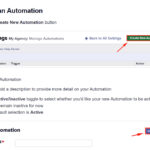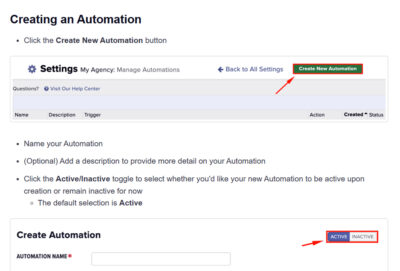Creating a culture of trust and collaboration in the workplace is essential for building a high-performing team. When employees feel trusted, they are more engaged and motivated to work collaboratively to achieve the organization’s goals. Trust and collaboration are key to fostering a culture of innovation and creativity, as well as driving growth and profitability.
In this blog post from Top Echelon Recruiting Software, we shall explore best practices for building a culture of trust and collaboration in the workplace. Those best practices are as follows . . .
Create a Clear Vision and Shared Purpose
Creating a clear vision and shared purpose is critical in building a culture of trust and collaboration in the workplace. Without a clear understanding of what the organization is trying to achieve and why it matters, employees may struggle to see the value in working together and building relationships based on trust.
A clear vision and shared purpose can help align employees around common goals and values. It provides a sense of direction and purpose, which can help motivate employees and inspire them to work together towards a common goal. This can help build a sense of community and shared responsibility, which can foster trust and collaboration.
In order to create a clear vision and shared purpose, organizations must communicate their goals and values in a clear and compelling way. This may involve developing a mission statement, core values, and a strategic plan that articulates the organization’s goals and objectives.
Organizations should also involve employees in the process of developing their vision and purpose. This can help build buy-in and ownership, and ensure that the vision and purpose reflect the perspectives and priorities of employees. This can also help foster a sense of collaboration and shared responsibility.
Overall, creating a clear vision and shared purpose is essential for building a culture of trust and collaboration in the workplace. It can help align employees around common goals and values, provide a sense of direction and purpose, and foster a sense of community and shared responsibility.
Encourage Open Communication
Encouraging open communication is crucial for building a culture of trust and collaboration in the workplace. When employees feel that they can speak openly and honestly with their colleagues and managers, they are more likely to feel engaged, motivated, and committed to their work. Here are some key strategies for encouraging open communication in the workplace:
Create a Safe and Supportive Environment: It’s important to create a safe and supportive environment where employees feel comfortable sharing their ideas, opinions, and concerns. This includes creating a culture that values openness, honesty, and respect, and that encourages constructive feedback and dialogue.
Lead by Example: Leaders and managers play a crucial role in encouraging open communication by modeling the behavior they want to see in others. This includes actively listening to employees, responding to feedback, and showing vulnerability and authenticity.
Provide Opportunities for Feedback: Providing opportunities for feedback is important for encouraging open communication. This includes soliciting feedback from employees through surveys, focus groups, and other channels, as well as providing regular opportunities for one-on-one meetings and performance reviews.
Foster Collaboration: Collaboration is key for building a culture of trust and open communication. This includes creating cross-functional teams, providing opportunities for collaboration and brainstorming, and recognizing and rewarding collaborative behavior.
Use Technology to Support Communication: Technology can be a powerful tool for supporting open communication in the workplace. This includes using communication and collaboration tools, such as instant messaging and project management software, as well as social media and other platforms for sharing information and ideas.
Encouraging open communication is critical for building a culture of trust and collaboration in the workplace. This requires creating a safe and supportive environment, leading by example, providing opportunities for feedback, fostering collaboration, and using technology to support communication.
Build Relationships
Building relationships is essential in building a culture of trust and collaboration in the workplace. Strong relationships between employees can help foster trust and encourage collaboration, leading to increased productivity and job satisfaction.
Effective relationship building involves creating opportunities for employees to get to know each other and work together in a positive and supportive environment. This can include team building activities, collaborative projects, and regular social events.
Organizations can also encourage relationship building by promoting open communication and active listening. Encouraging employees to share their ideas and perspectives can help build trust and create a sense of shared ownership and responsibility.
In addition, organizations can create a supportive work environment that encourages positive relationships. This can involve providing resources and support for employees, such as training and development opportunities, and recognizing and rewarding their contributions.
Finally, building relationships requires a commitment from both employees and leadership. Employees must be willing to invest time and energy in building relationships, while leadership must provide the necessary resources and support to create a culture of trust and collaboration.
Building relationships is essential in building a culture of trust and collaboration in the workplace. It requires creating opportunities for employees to get to know each other, promoting open communication and active listening, creating a supportive work environment, and a commitment from both employees and leadership.
Set Clear Expectations
Setting clear expectations is a critical component in building a culture of trust and collaboration in the workplace. Clear expectations help employees understand their roles and responsibilities, which can lead to increased accountability and productivity.
Effective communication is key in setting clear expectations. This includes clearly defining job duties and expectations, as well as communicating any changes or updates in a timely manner. Organizations can also create policies and procedures that outline expectations for behavior and performance.
It is important for leaders to model the behavior they expect from their employees. This includes being transparent and honest, following through on commitments, and treating all employees with respect and fairness.
Organizations can also involve employees in the process of setting expectations. This can include asking for input on job duties and responsibilities, and involving employees in goal-setting and performance evaluations. This can help create a sense of ownership and accountability among employees.
Finally, it is important to provide regular feedback and support to employees. This can include recognizing and rewarding good performance, providing constructive feedback when necessary, and offering resources and support to help employees achieve their goals.
Setting clear expectations is critical in building a culture of trust and collaboration in the workplace. It involves effective communication, modeling the behavior expected from employees, involving employees in the process, and providing regular feedback and support.
Empower Employees
Empowering employees is key to building a culture of trust and collaboration in the workplace. When employees feel empowered, they are more likely to take ownership of their work, feel engaged and motivated, and collaborate more effectively with their colleagues. Here are some key strategies for empowering employees in the workplace:
Provide Autonomy: Providing employees with autonomy over their work is essential for empowering them. This includes giving them the freedom to make decisions and take ownership of their work, as well as providing clear guidelines and support.
Encourage Creativity and Innovation: Encouraging creativity and innovation is another important way to empower employees. This includes providing opportunities for brainstorming and problem-solving, as well as recognizing and rewarding creative thinking and innovative ideas.
Provide Opportunities for Growth and Development: Providing opportunities for growth and development is essential for empowering employees and helping them reach their full potential. This includes providing training, coaching, and mentoring, as well as supporting career development and advancement.
Recognize and Reward Performance: Recognizing and rewarding performance is important for empowering employees and showing them that their contributions are valued. This includes providing feedback, acknowledging accomplishments, and providing incentives and rewards for exceptional performance.
Foster a Culture of Collaboration: Fostering a culture of collaboration is essential for empowering employees and building trust in the workplace. This includes providing opportunities for teamwork and collaboration, as well as recognizing and rewarding collaborative behavior.
Empowering employees is essential for building a culture of trust and collaboration in the workplace. This requires providing autonomy, encouraging creativity and innovation, providing opportunities for growth and development, recognizing and rewarding performance, and fostering a culture of collaboration.
Recognize and Reward Good Work
Recognizing and rewarding good work is a critical component in building a culture of trust and collaboration in the workplace. When employees feel valued and appreciated, they are more likely to be engaged, motivated, and committed to their work.
Effective recognition and rewards programs should be designed to align with the organization’s goals and values, and should be based on fair and consistent criteria. Recognition can take many forms, including verbal praise, public acknowledgment, and small tokens of appreciation such as gift cards or certificates.
Rewards should also be designed to align with the organization’s goals and values, and should be based on clear and consistent criteria. This can include bonuses, promotions, additional time off, or other perks.
It is important for recognition and rewards programs to be transparent and fair. This means providing clear guidelines for what qualifies for recognition and rewards, and making sure that all employees have an equal opportunity to be recognized or rewarded for their work.
Finally, recognition and rewards should be ongoing, rather than a one-time event. This can help create a culture of appreciation and support, where employees feel valued and recognized on a regular basis.
Recognizing and rewarding good work is a critical component in building a culture of trust and collaboration in the workplace. It involves designing effective recognition and rewards programs that align with the organization’s goals and values, providing fair and consistent criteria, and making sure that recognition and rewards are ongoing and transparent.
Embrace Diversity and Inclusion
Embracing diversity and inclusion is essential for building a culture of trust and collaboration in the workplace. When employees feel that their differences are valued and respected, they are more likely to feel engaged, motivated, and committed to their work. Here are some key strategies for embracing diversity and inclusion in the workplace:
Create a Culture of Respect and Inclusivity: Creating a culture of respect and inclusivity is key to embracing diversity in the workplace. This includes promoting diversity and inclusion through policies, programs, and practices, and celebrating differences in culture, gender, race, religion, sexual orientation, and ability.
Provide Training and Education: Providing training and education on diversity and inclusion is essential for building awareness and understanding among employees. This includes providing training on cultural competency, unconscious bias, and communication skills.
Foster an Inclusive Environment: Fostering an inclusive environment is important for ensuring that everyone feels welcome and valued in the workplace. This includes providing opportunities for feedback, encouraging open communication, and creating a safe and supportive environment for all employees.
Hire Diverse Talent: Hiring a diverse workforce is important for promoting diversity and inclusion in the workplace. This includes actively seeking out and recruiting diverse candidates, as well as providing equal opportunities for career advancement and development.
Celebrate Diversity: Celebrating diversity is important for recognizing and valuing the differences that make each employee unique. This includes promoting diversity through company events and activities, recognizing and celebrating cultural holidays, and supporting diverse employee resource groups.
Embracing diversity and inclusion is critical for building a culture of trust and collaboration in the workplace. This requires creating a culture of respect and inclusivity, providing training and education, fostering an inclusive environment, hiring diverse talent, and celebrating diversity.
Lead by Example
Leading by example is a critical component in building a culture of trust and collaboration in the workplace. When leaders model the behaviors they expect from their employees, they set a positive tone and create a culture of respect and accountability.
Leaders can lead by example by being transparent and honest, communicating openly and effectively, and treating all employees with respect and fairness. They should also be committed to collaboration and teamwork, encouraging employees to work together to achieve shared goals.
In addition, leaders should be willing to listen to feedback and take action to address employee concerns. This can involve actively seeking out employee input, providing opportunities for employees to share their ideas and perspectives, and taking steps to address any issues that arise.
Leaders can also demonstrate their commitment to building a culture of trust and collaboration by investing in employee development and growth. This can include providing training and development opportunities, mentoring and coaching, and supporting employee goals and aspirations.
Finally, leaders should be willing to hold themselves accountable for their actions and decisions. They should be willing to admit mistakes and take responsibility for any negative outcomes, and work collaboratively with employees to find solutions and prevent similar issues from occurring in the future.
Leading by example is a critical component in building a culture of trust and collaboration in the workplace. It involves modeling positive behaviors, being transparent and honest, listening to feedback, investing in employee development, and being accountable for actions and decisions.
Encourage Feedback and Continuous Improvement
Encouraging feedback and continuous improvement is essential for building a culture of trust and collaboration in the workplace. When employees feel that their opinions are valued and that their contributions matter, they are more likely to feel engaged, motivated, and committed to their work. Here are some key strategies for encouraging feedback and continuous improvement in the workplace:
Create a Culture of Open Communication: Creating a culture of open communication is key to encouraging feedback and continuous improvement in the workplace. This includes promoting open and honest communication between employees, as well as between employees and management.
Provide Opportunities for Feedback: Providing opportunities for feedback is essential for understanding the needs and concerns of employees. This includes conducting surveys, holding regular meetings, and providing opportunities for one-on-one feedback.
Encourage Collaboration and Teamwork: Encouraging collaboration and teamwork is important for building a culture of trust and collaboration in the workplace. This includes providing opportunities for cross-functional teams, encouraging knowledge sharing, and promoting a sense of community among employees.
Emphasize Continuous Improvement: Emphasizing continuous improvement is essential for promoting growth and development in the workplace. This includes encouraging employees to seek out new challenges, providing opportunities for learning and development, and recognizing and rewarding innovative thinking.
Use Feedback to Drive Change: Using feedback to drive change is important for improving the workplace and addressing the needs and concerns of employees. This includes using feedback to inform policy and program development, as well as taking action on areas for improvement.
Encouraging feedback and continuous improvement is essential for building a culture of trust and collaboration in the workplace. This requires creating a culture of open communication, providing opportunities for feedback, encouraging collaboration and teamwork, emphasizing continuous improvement, and using feedback to drive change.
The benefits of trust and collaboration
Building trust and collaboration in the workplace is critical for organizational success. When employees trust each other and work together effectively, they are more productive, innovative, and engaged. In this essay, we will explore the benefits of building trust and collaboration in the workplace and how organizations can foster these important qualities.
Benefits of Building Trust in the Workplace
Higher Productivity: When employees trust each other, they are more likely to collaborate and work together effectively. This can result in higher productivity, as employees are able to focus on their work and achieve their goals without worrying about their colleagues undermining them.
Improved Communication: Building trust in the workplace can also lead to improved communication. When employees trust each other, they are more likely to be open and honest in their communications. This can lead to better problem-solving and decision-making, as employees are able to share their ideas and perspectives freely.
Increased Innovation: Trust is also important for promoting innovation in the workplace. When employees feel comfortable taking risks and sharing their ideas, they are more likely to come up with creative solutions to problems. This can lead to new products, processes, and services that can help the organization stay competitive.
Better Retention: Employees who trust their colleagues and feel valued are more likely to stay with the organization. This can reduce turnover and associated costs, such as recruitment and training expenses.
Enhanced Employee Engagement: Building trust in the workplace can also lead to enhanced employee engagement. When employees feel valued and supported, they are more likely to be motivated and committed to their work. This can result in higher job satisfaction and a more positive work environment.
Benefits of Building Collaboration in the Workplace
Improved Problem-Solving: Collaboration can help organizations solve complex problems more effectively. By bringing together individuals with different perspectives and expertise, organizations can develop innovative solutions that may not have been possible otherwise.
Enhanced Creativity: Collaboration can also lead to enhanced creativity in the workplace. When employees work together and share their ideas, they are more likely to come up with new and innovative solutions to problems.
Increased Efficiency: Collaboration can also lead to increased efficiency in the workplace. When employees work together, they can share the workload and complete tasks more quickly and efficiently. This can save time and resources, and improve organizational performance.
Better Decision-Making: Collaboration can also improve decision-making in the workplace. When employees work together and share their ideas and perspectives, they can make more informed decisions that take into account different viewpoints and potential consequences.
Higher Employee Satisfaction: Collaboration can also lead to higher employee satisfaction. When employees work together and feel that their contributions are valued, they are more likely to be satisfied with their work and the organization.
Building a culture of trust and collaboration in the workplace is essential for building a high-performing team. Leaders should create a clear vision and shared purpose, encourage open communication, build relationships, set clear expectations, empower employees, recognize and reward good work, embrace diversity and inclusion, lead by example, and encourage feedback and continuous improvement. By following these best practices, organizations can create a workplace where employees feel trusted, valued, and motivated to
How to Build Trust with Talent Management Software
Building trust with talent management software is critical for successful adoption and utilization. Employees need to feel confident that their data is secure and that the software is reliable and effective. Here are some key strategies for building trust with talent management software:
Communicate Transparently: It’s important to communicate transparently about how the software works, what data it collects, and how it will be used. This includes providing clear explanations of privacy policies, data handling processes, and security protocols.
Demonstrate the Benefits: Employees are more likely to trust talent management software if they can see how it will benefit them. This includes highlighting the software’s features and capabilities that will help them do their jobs more efficiently and effectively.
Provide Training and Support: Providing training and support to employees can help to build trust by ensuring that they understand how to use the software effectively. This includes providing clear instructions, tutorials, and ongoing support as needed.
Involve Employees in the Selection Process: Involving employees in the selection process for talent management software can help to build trust by ensuring that their needs and preferences are taken into account. This includes gathering feedback and input from employees about what features and capabilities are most important to them.
Ensure Data Security and Privacy: Ensuring data security and privacy is critical for building trust with talent management software. This includes implementing appropriate security measures, such as encryption and access controls, and adhering to industry standards and best practices.
Solicit Feedback and Address Concerns: Finally, it’s important to solicit feedback from employees and address any concerns or issues that arise. This can help to build trust by demonstrating a commitment to listening to and addressing employee needs and concerns.
Building trust with talent management software requires transparent communication, demonstrating the benefits, providing training and support, involving employees in the selection process, ensuring data security and privacy, and soliciting feedback and addressing concerns.









